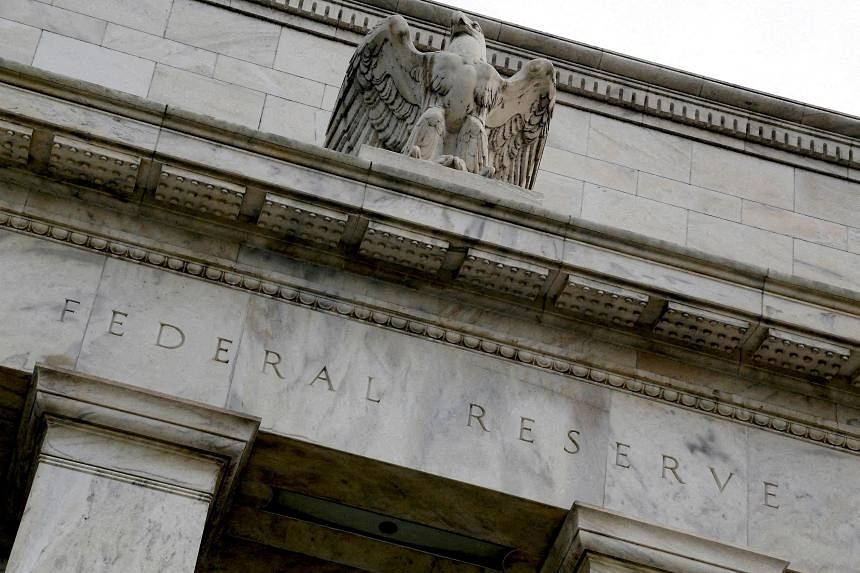SINGAPORE - Strong job numbers and higher prices for March are feeding doubts about the likelihood of a Federal Reserve rate cut in June. Adding to this are higher oil prices and rising tensions in the Middle East.
Banking giant JP Morgan Chase’s disappointing quarterly results, which saw its share price falling over 6 per cent on April 12, added to market jitters. Chief executive Jamie Dimon pointed to economic uncertainties faced by the bank’s consumer and business customers.
“The market is probably too happy,” Mr Dimon told reporters. “I think the chance of bad outcomes is higher than other people think.”
Not exactly encouraging words for investors.
All in all, it was a turbulent week for markets as the CBOE Market Volatility Index – more commonly known as the “fear index” – rose 16.1 per cent on April 12 to its highest level in six months.
The Dow Jones had its worst week in a year as it fell 2.23 per cent to 37,983.24 points – its lowest close since late January. The S&P 500 dipped 1.55 per cent for the week to 5,123.41 points, while the tech-heavy Nasdaq Composite slipped 0.45 per cent to 16,175.09 points.
This came as the 10-year Treasury yield climbed to its highest levels since November 2023. Gold reached for new highs.
In Singapore, the Straits Times Index closed at 3,216.91, barely changed from the previous week’s close at 3,218.26 points. Banks and conglomerates like Jardine C&C were in play, but not enough to support the index.
Offshore and marine plays like Mermaid Maritime, Beng Kuang Group and Marco Polo Marine have also been making strong gains over the past month, fuelled by rising oil price and increased demand for their services.
Beng Kuang has doubled in price over the past two months after posting a turnaround with net profit of $7.9 million in financial year 2023, with revenue increasing 33.9 per cent to $79.2 million.
Mermaid’s stock rose 50 per cent over the past month to a new record on April 12, after the company unveiled a 23 per cent rise in revenue for 2023 to US$275.4 million (S$375 million) and net profit of US$9.7 million, turning around from a loss of US$200,000 in 2022.
Meanwhile, UOB Kay Hian has a “buy” call on Marco Polo with a target price of 8.6 cents, citing higher charter rates and utilisation rates.
But undervaluation of stocks here remains rampant, prompting rising insider buybacks. According to SGX data, primary listed companies here bought back $230 million worth of their stocks during the first three months of 2024, more than double the $110 million in buybacks during the first quarter of 2023.
On a broader market front, there seems to be increasing doubt within market circles about whether the Fed will indeed start cutting interest rates in June, or delay. The latest CME FedWatch Tool suggests that market participants see a 56 per cent chance of a Fed rate cut in June, down from about 70 per cent about a month earlier.
After hot US job numbers the previous week, the latest blow to the market came from the higher than expected March US consumer price index numbers. The fear is that stickiness in the inflation numbers will prompt delays, or smaller cuts, by the Fed.
Some Fed governors are voicing reluctance to cut rates.
“There is no clear need to adjust monetary policy in the very near term,” quipped New York Fed president John Williams last week, following the higher-than-expected March inflation numbers. Meanwhile, San Francisco Fed president Mary Daly said there was still “a lot of work to do” to get inflation on track to the Fed’s 2 per cent target.
Not exactly what the market wants to hear. After one of the most aggressive Fed rate hiking cycles in 40 years, real interest rates in the US are at a 15-year high.
While inflation hurts consumers, high interest rates can hurt both corporate earnings and households with mortgages, credit cards and all other loans. If a vicious circle of inflation and high interest rates feeds on itself, the resultant fall in earnings, consumer spending, and ultimately employment, could lead to recessionary conditions.
Whether the current bull market can be sustained will depend largely on the Fed’s ability to dampen inflation without harming the core of the economy.
Still, stocks have rallied strongly in 2024. The MSCI All-Country World Index is up 6.4 per cent, while the S&P 500 has added 7.9 per cent.
Some market experts reckon the AI-hype has seen an excessive concentration of global equity markets in technology stocks, particularly the “Magnificent Seven”. Mr Bjorn Jesch, global chief investment officer at German asset management company DWS Group, fears they are reaching extreme levels.
Mr Jesch noted that these stocks – Apple, Microsoft, Alphabet, Meta, Amazon, Tesla and Nvidia – now account for 34 per cent of the S&P 500’s market capitalisation and many have reached peak valuations, making them vulnerable to changes in market conditions. He called for diversification into value companies which have low price-to-book ratios, high dividend yield, and low price-to-earnings ratios, adding that these stocks are mainly found in the financial, healthcare, industrial and energy sectors.
That said, bull markets never go up in a straight line. Volatility and intermittent pullbacks should be expected and they are normal. In fact, occasional pullbacks and market breathers are necessary for a more sustainable rally.
Seasoned market watchers like Mr Vasu Menon, managing director for investment strategy at OCBC, remain convinced that the market rally remains intact.
“The ride ahead may be bumpy, but the market uptrend could continue over the coming years if central banks in the major markets cut rates over the next two to three years,” he pointed out. “The Swiss National Bank surprised markets by cutting rates recently, the European Central Bank gave its strongest indication last week that rate cuts could go ahead, while the Bank of England and the Reserve Bank of Australia have also softened their stance recently.”
Indeed, when former Fed chairman Paul Volcker won the battle against inflation in the 1980s, what followed was a multi-year rally in the S&P 500 index. There are no guarantees that this will play out in the same way this time around, given that the world has become a lot more complex and geopolitically unstable since the 1980s. But the combination of looser monetary policy and limited hard-landing risks should be positive for equity markets in the medium term.
This week, the market could hit more turbulence amid a deluge of news flows and geopolitical uncertainties (especially in the Middle East). With Iran launching dozens of drones and missiles at Israel on April 13, it remains to be seen how a potential major escalation between the regional arch enemies impacts the market.
The first-quarter reporting season in the US has just started. Ultimately, earnings drive stock prices and investors will look out for how companies perform relative to expectations, earnings guidance, and profit margins given concerns about inflation and what managements say about the outlook.
On the macro data front, there will be the release of not only industrial output figures for the euro area, but also the Empire State Index and retail sales for the US. On April 16, Chinese industrial output and retail sales figures are likely to be supportive for growth. On the same day, the ZEW indices for the euro area and its member states will be released, and industrial output and capacity utilisation figures for the US are due as well.
On April 18, the focus will be on the United States, with the Philadelphia Fed index and the index of leading indicators due to be released. If the consensus is right, there may be some relief on the inflation front. In contrast, initial and subsequent claims may continue to point to a tight labour market.


